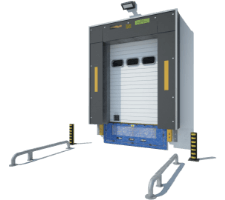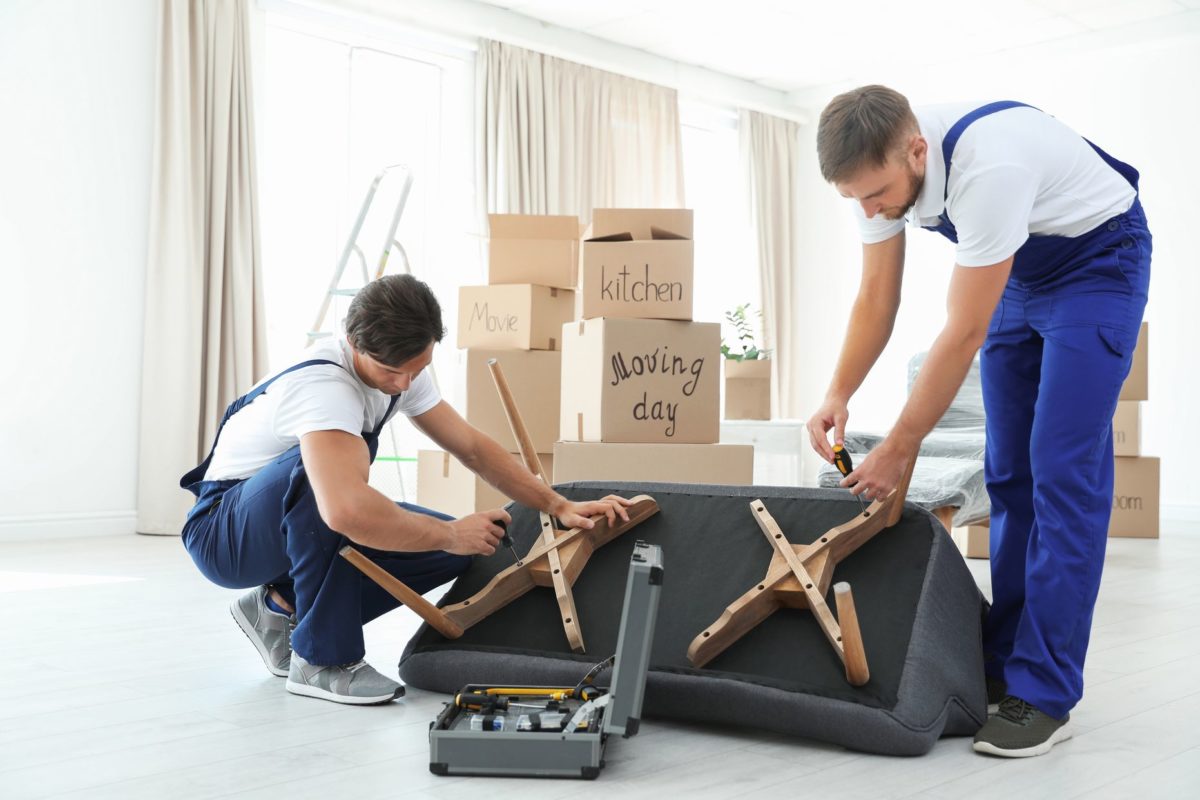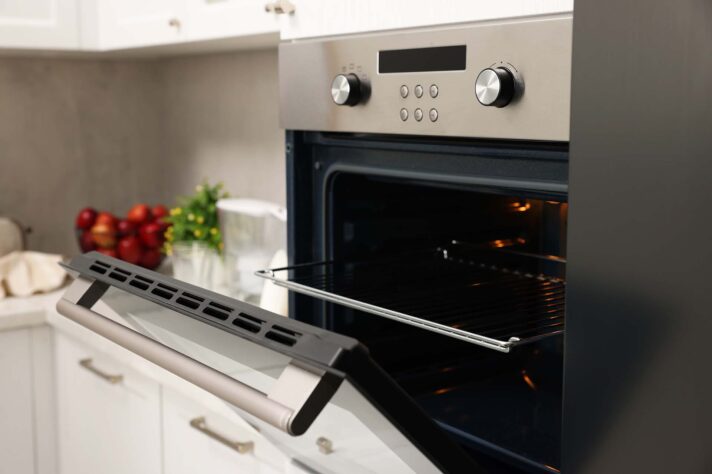This task requires careful planning and execution. Start by disassembling the bedstead, and then wrap each part in blankets, secure them with packing tape or plastic wrap, and use furniture straps to keep everything together. While hiring professional movers can alleviate the stress and ensure a smooth transition, this guide will help you understand the process and hopefully give you enough confidence to try it on your own.
Rest Easy: How to Move a Bed Frame to Your New Home
Renting your first apartment or buying a house is always an exciting milestone in life. But once the paperwork is done, reality sets in – now you need to get your belongings safely to their new home. One of the most intimidating tasks? Figuring out how to move a bed frame up flights of stairs or down hallways that seem about two inches too narrow. But don’t worry – here’s the ultimate guide with plenty of tips and tricks.


Evaluate the Size, Weight, and Complexity of the Bed Frame
No matter if you’re moving cross country into a new home or your first apartment, maneuvering bed frames proposes a whole new level of challenge. In general, relocating furniture can be tricky due to its size and weight, and the bedstead can be especially difficult to work around in that regard. Because of that, it’s essential to tackle the task and plan the move with a strategic mindset.
As you embark on this adventure, it’s crucial to carefully evaluate the dimensions, heft, and intricacies of your bed frame. This way, you can plan ahead, ensuring a smooth transition without wrestling with this colossal puzzle when the moving day comes.
Identify Any Removable Components or Fragile Parts That Require Special Attention
Besides assessing the size and weight of the bedstead, take a moment to identify any removable components or fragile items that require some love and care. Does your bed frame have detachable headboards, footboards, or slats? Are there delicate decorations or intricate designs that demand extra caution? It’s important to identify these elements first, as they’ll be one of the first things you need to address once you get to disassembling.


How to Move a Bed Frame – Start by Disassembling the Object
Before you can conquer the treacherous roads of relocation, you need to strip your bedstead down to its bare bones. First things first, bid farewell to your trusty mattress, bedding, and any accessories.
If you no longer need some of these items, you can always donate unwanted things to local charities or organizations such as Goodwill. As for bringing your bedstead one step closer to portable form by loosening and disconnecting joints, screws, or brackets, you’ll need a handy set of wrenches, screwdrivers, and pliers.
Step-By-Step Instructions for Disassembling the Bed Frame
Once you’ve gathered your tools and mentally prepared for the challenge ahead, it’s time to dive into the disassembling process. Here’s a general roadmap to follow:
- Begin by removing any attached headboards, footboards, or side rails by carefully detaching them using the appropriate tools, all while keeping track of screws or fasteners,
- If your bedstead has slats or support beams, loosen screws or bolts and gently remove them, ensuring they are safely stored or secured,
- Disassemble any other removable components, such as decorative knobs, finials, or frames,
- As you dismantle the bedstead, pay close attention to any additional joints, screws, or brackets that need to be loosened and gradually disconnect them, taking care not to strip any screws or damage the frame,
- Keep track of the hardware, storing it in sealed bags or containers, and labeling them accordingly, as this will save you from a frustrating game of hide-and-seek when it’s time to unpack boxes and reassemble the bed frame.
While this step-by-step guide provides general instructions, keep in mind that the manufacturer’s instructions should be your guiding light throughout this process, as each bedstead can have its unique quirks. Here’s a useful video to help you if you’re dealing with IKEA furniture:
Gather Packing Supplies
Now that you’ve mastered the art of disassembling, it’s time to gear up on packing materials. Protecting the bedstead and all of its components during the journey is of utmost importance, especially if there are any delicate and fragile items incorporated into the design.
While booking professional cross-country moving services will save you the trouble of finding these supplies yourself, here’s a list of essential materials you’ll need for a DIY project:
- Sturdy moving blankets,
- Furniture pads,
- Bubble wrap,
- Foam padding,
- Packing tape,
- Plastic wrap,
- Furniture straps.
Employing Professionals for the Job Can Provide You With a Hassle-Free Experience
Relocating is already a demanding task, and bedsteads can be bulky, heavy, and intricate to handle. Professional long-distance movers, such as Cross Country Moving Company, have the experience and expertise to disassemble and pack furniture with precision and care. On top of that, movers have the necessary tools and packing materials. So, while a DIY approach is feasible, employing one of the cross-country moving companies can be your ticket to a stress-free relocation.
Moving
Our mission is to bring high quality, long distance moving services to every customer.
Packing
Our expert moving teams are trained to ensure the safety of your personal belongings.

Storage
Cross Country Moving Company is the most trusted name in auto industry in the country.
Protect the Bed Frame
When it comes to figuring out how to move a bed frame, half the battle lies in ensuring the protection of all its parts. By employing the right techniques and materials, you can minimize the risk of damage and ensure that every piece arrives at your new house in pristine condition.
While your chosen long-distance moving company will more than likely provide you with exceptional packing services and peace of mind, it’s good to familiarize yourself with these relocation hacks. So, let’s dive into some essential methods:
Wrap the Disassembled Parts in Moving Blankets
To shield the disassembled parts of the bedstead from potential bumps and scratches, wrapping them in moving blankets is a top-notch strategy. Begin by carefully placing each component on a blanket, making sure to cover it entirely. Then, fold the sides of the blanket over the part, ensuring a snug fit. This additional layer of cushioning will provide excellent protection against any rough handling or unavoidable movement.
Secure the Wrapped Parts With Packing Tape or Plastic Wrap to Keep Them in Place
Once you’ve wrapped each part in a blanket, it’s essential to secure everything firmly in place. Utilize packing tape or plastic wrap to secure the blankets tightly around the components. This will prevent them from slipping or shifting during transportation, reducing the likelihood of any unintended impact or damage.
Use Furniture Straps or Ropes to Further Secure the Wrapped Parts Together
For an extra layer of security, consider using furniture straps or ropes to fasten the wrapped parts of your bedstead together. These can be placed strategically around the components, creating a tight bundle that minimizes movement and keeps everything intact during the journey. Just make sure the straps or ropes are tightly secured but not overly tightened, maintaining a balance between stability and avoiding undue pressure on the wrapped parts.
If You Want to Avoid All the Fuss, Hire Cross-Country Movers to Assist You
If the idea of handling the complexities and logistics of moving a bedstead on your own seems overwhelming, there’s no need to feel stressed. Opting to hire a professional mover like the Cross Country Moving Company can be a game-changer. By entrusting your move to experienced professionals, you can wave goodbye to the fuss, stress, and physical exertion that often accompany the DIY route. The long-distance moving services we offer will guarantee you an efficient move.


Follow Our Guide, and You’ll Move All Your Items Into a New Home With Ease
Armed with knowledge of disassembly, packing techniques, and a sprinkle of professional wisdom, you’re now ready to conquer the task of relocating your beloved bedstead to its new abode. By carefully evaluating, protecting, and securing each component, you’ll ensure a worry-free journey for your future. Gather your packing supplies, and with a bit of skill and professional help, you’ll be settling into your new home before you know it.
Remember, it’s not just about the furniture – it’s about preserving your comfort and peace of mind during this life-altering process. Contact us today and enjoy the peace of mind that comes with knowing your precious furniture will be handled with utmost care. Don’t let the fuss dampen your journey – make your move a breeze with the assistance of a skilled cross-country moving service.
FAQ
Do I Need to Disassemble the Bed Frame for Every Move?
It is generally recommended to disassemble the bedstead for every move, as it makes it easier to transport and navigate through narrow doorways or staircases. It also reduces the risk of damage during transit for both the main construction and the individual components.
How Can I Prevent Damage to Delicate or Intricate Bed Frame Designs?
To prevent damage to delicate or intricate designs, you can take several precautions. Wrap the delicate parts with bubble wrap or foam padding, ensuring they are adequately cushioned. Use packing tape to secure the protective wrapping in place. Additionally, you can use furniture pads or blankets to provide extra protection during transit.
What Tools Do I Need to Disassemble and Reassemble the Bed Frame?
The specific tools required may vary depending on the bedstead design, but commonly needed tools include wrenches (adjustable or specific size), screwdrivers (both flathead and Phillips), pliers, and sometimes Aleen wrenches or hex keys for certain types. These tools are used to loosen and disconnect joints, screws, or brackets during disassembly.
Can I Hire Professional Movers to Handle the Bed Frame Relocation?
Yes, hiring professional movers can be a wise choice when dealing with bedstead relocation. These movers have the expertise, experience, and equipment to handle the disassembly, packing, transportation, and reassembly of all pieces of furniture. They also ensure proper handling, provide specialized packing materials, and take care of the logistics, making the entire process smoother.
How Should I Handle Bed Frame Hardware During the Move?
Bedstead hardware, such as screws, bolts, and other small components, should be handled with care during the move. It is advisable to keep the hardware in labeled bags or containers, separated from other items. It’s a good practice to pack the hardware separately and keep it with the disassembled bedstead components. This way, it will be readily available once it’s time to reassemble the bed frame.






